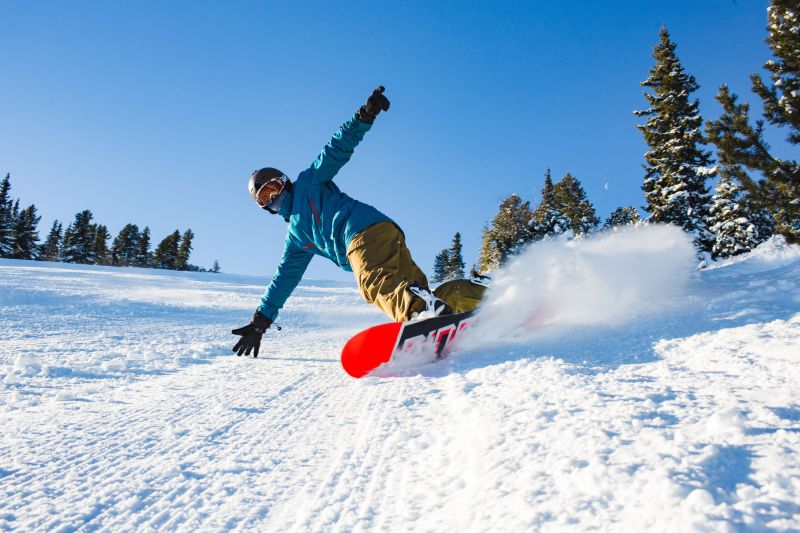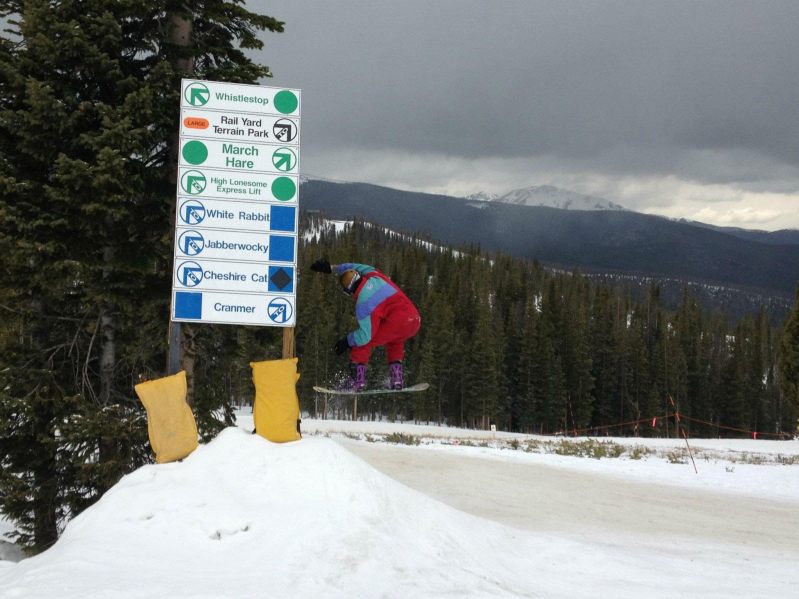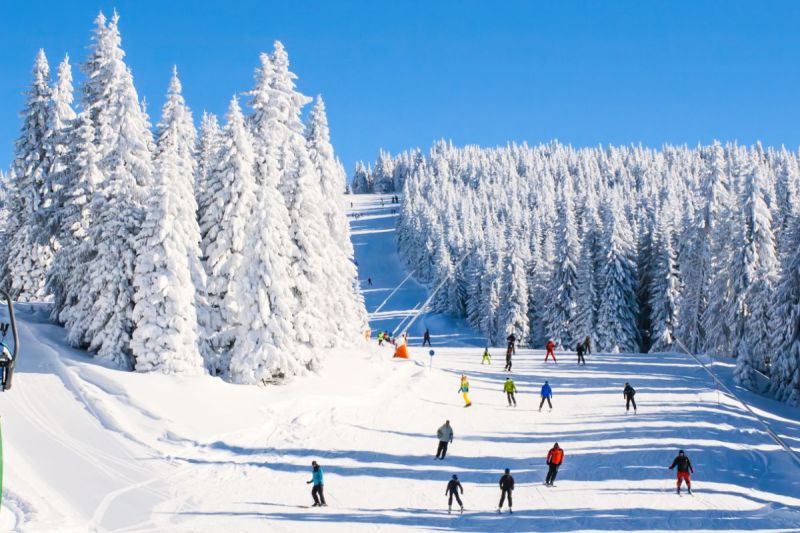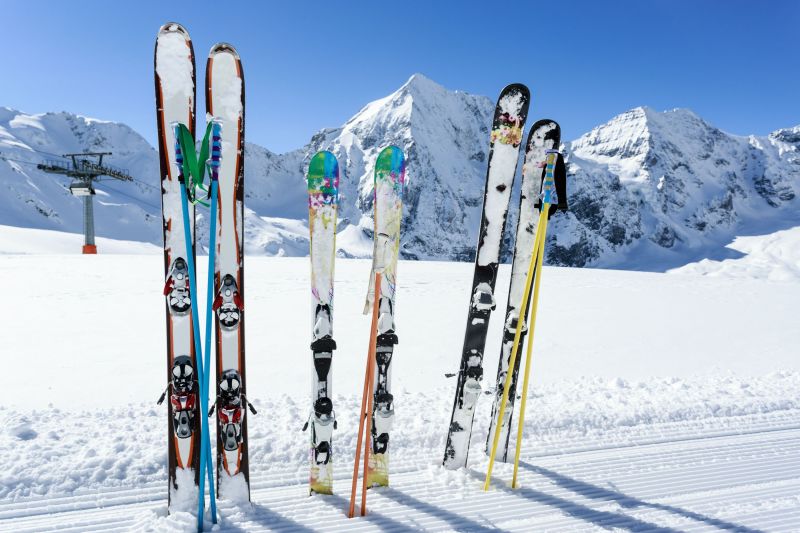
There’s no getting around it; winter 2023 has been a wild one. We’ve had the bomb cyclones that have ravaged the West Coast of the US, leading to power outages, community shutdowns, and widespread flooding. Then there was probably the most unusual headline of the winter from Florida, where freezing weather was immobilizing cold-blooded iguanas leading to them falling from trees.
But out of all of this wild weather has come a bonus many never thought they would see. It looks like we’re going to be snowboarding into summer! That’s great, right? Right? Well, I’m never one to knock the opportunity to go snowboarding, but even I can’t ignore the elephant in the room — it was probably blown here by the winter storms. At the heart of all that is great about late-season snowboarding is a phenomenon that we’re not just affected by as an industry; we’re also partly to blame.

Climate change and the ski industry
There are no two ways about it; the ski industry needs snow in order to survive. While it might be the case that some resorts in the US — like Mammoth Mountain, Palisades Tahoe, and Jackson Hole, for example — have seen record snowfall, there are others that aren’t so lucky. Across Europe, ski resorts are recording lower-than-average snowfall, and many were forced to close this season due to a lack of snow, according to CNN.
One study notes that as much as 77% of the Alps has experienced a greening, which refers to climate change causing a reduction in snow and Alpine habitats. According to the Intergovernmental Panel on Climate Change’s 2019 report, the Alps are predicted to see up to a 25% loss in snow mass over the next 10-30 years. Even Val Thorens, the highest resort in Europe, is seeing a downward trend in its snowfall records.
In part, this is because winter is getting shorter. According to one study, winter could be less than two months long by 2100 (whereas summer will last six months, in comparison). From the first falling leaves to snowmelt, we’re getting less and less time to hit the slopes and shred that powder — 2023 aside, of course. December is no longer certain for skiing. Christmas on the slopes is a gamble, and New Year’s has become more about the apres ski than about the skiing in some areas.
For an informal case study, how’s this? I worked three seasons at the same European resort, spanning six years. In the first season, we were on the slopes by mid-December with most runs open. By the final season, snow was being made at resort level overnight and shipped to the higher slopes in trucks, where it could be groomed into place.
There’s a trend in snowpacks across ski resorts worldwide, and unfortunately, it’s not going in our favor. The EPA has tracked snowpack over the past 60-plus years, and according to their analysis, a decrease in snowpacks far outweighs any locations with increases.

But why have we got such a wild winter this year?
Every winter, you’ll hear a climate change denier say one particular phrase – and if you live on the West Coast of the U.S., you’re probably sick of it this year. “Man, we could use a big fat dose of global warming.” Or something like that, at least. I can understand it, too. When winters appear to be getting colder and wilder, why should we believe that the world is warming up?
Wim Thiery, a professor of climate science at the University of Brussels, drew a direct line between the record snowfall the West Coast is seeing and the dearth of snow European resorts have gotten. The same jet stream that supplied the U.S. with cold air from the Arctic fanned air from subtropical zones to Europe, he said, explaining to the Associated Press, “By the end of the century (it’s) just going to be over … skiing in the Alps as we know it… In the future, these problems will get worse, because the snow will continue to melt as long as the climate warms.”
I hate to say it, but the world is bigger than wherever you happen to be, and cold weather and snowfall are the effect of a phenomenon happening elsewhere. According to the Environmental Defence Fund, as the planet heats, more water is evaporated from seas and rivers. This means that the atmospheric rivers that move moisture around the planet are holding more water vapor than usual. As these ‘rivers in the sky’ flow over the land, it’s not uncommon for them to dump moisture. But with so much extra potential precipitation onboard, there’s a lot more for them to dump.
Then there’s the shift in weather patterns that are caused by a changing atmosphere. Take the polar vortex, for example. This cycle of cold air near the poles helps to keep the temperatures at the Arctic cold and maintain the Arctic ice. A stable polar vortex allows the polar jet stream — which carries cold temperatures — to stay further north and keeps winters milder. If the polar vortex shifts, or breaks, it can disrupt this polar jet stream and cause it to fluctuate, pushing cooler weather further south than usual. While this happens naturally every few years, this disruption is also affected by fluctuations in air pressure brought on by climate change issues like rising surface temperature and a diminishing of Arctic ice.

How can the ski industry make itself more sustainable?
What all of this means is that while winter 2023 might have been a great one in the eyes of skiers and snowboarders in specific regions, it’s another indicator of that downward trend. Climate change is having an effect across the world, and these wild winter storms and late seasons are just the aftereffects of deep-rooted environmental issues. So what can we do to help combat this? The good news is that as skiers and snowboarders, you’re already doing one major thing to help; you’re engaging.
It’s generally recognized that people who engage with outdoor sports on the whole — looking at you, fellow outdoorsmen — have a positive relationship with working toward environmental change. We already want to help it, which is half the battle sometimes. Now, we just need to know how. Well, you’re not alone. Ski resorts are making changes at a fundamental level. Just two examples here are Aspen Snowmass relying heavily on solar energy generated on the mountain and Taos Valley becoming carbon neutral. Then there are organizations like Protect Our Winters who recently held a Climate World Cup at Aspen Snowmass and are using their voice — along with those of ski resorts — to implement change at a systemic level. It’s about more than just recycling. It’s about working as an industry to push for change.
While we need these systemic changes in order to see climate stabilization, we, as skiers and snowboarders, can make small-scale changes that, if we all get involved, could have a widespread impact. Here are just a few of my suggestions:
- Share transport, or use public transport if possible. We’ve all seen those parking lots and lines up the mountains churning out gas into the environment, right?
- Reduce gear-wastage. I love buying new snowboarding gear, but only when I need it. Where you can, repair gear and keep it going as long as possible. When it seems like all is lost, donate it or recycle it, there’s always a use for it somewhere.
- Limit air travel. Perhaps it’s time to hit that local resort for some quiet shredding? I’m not advocating for no flying, but perhaps stay somewhere longer and move around a little less frequently if you can, or limit yourself to one flight per year.
- Use environmentally friendly ski waxes. This helps to prevent the impact of tiny wax particles getting into animals, soils, and water systems.
- Keep your mountains tidy. Pick up litter, don’t drop cigarette butts, and help the mountains to remain pristine.
Editors' Recommendations
- How to care for your Gore-Tex gear properly for max performance
- Burton is re-releasing some of its most iconic snowboards ever and we want them all
- TREW has created winter wear specifically for spring (yes, really!)
- Rhythm Rentals review: If you’re hitting the powder in Japan, you should leave your snowboard at home
- Watch as this skier saves a snowboarder stuck in deep powder




